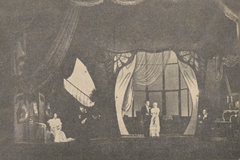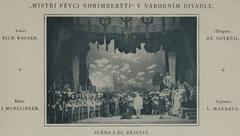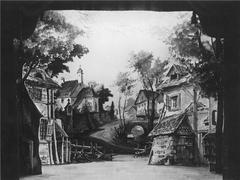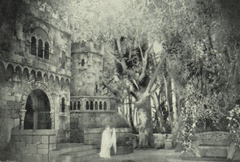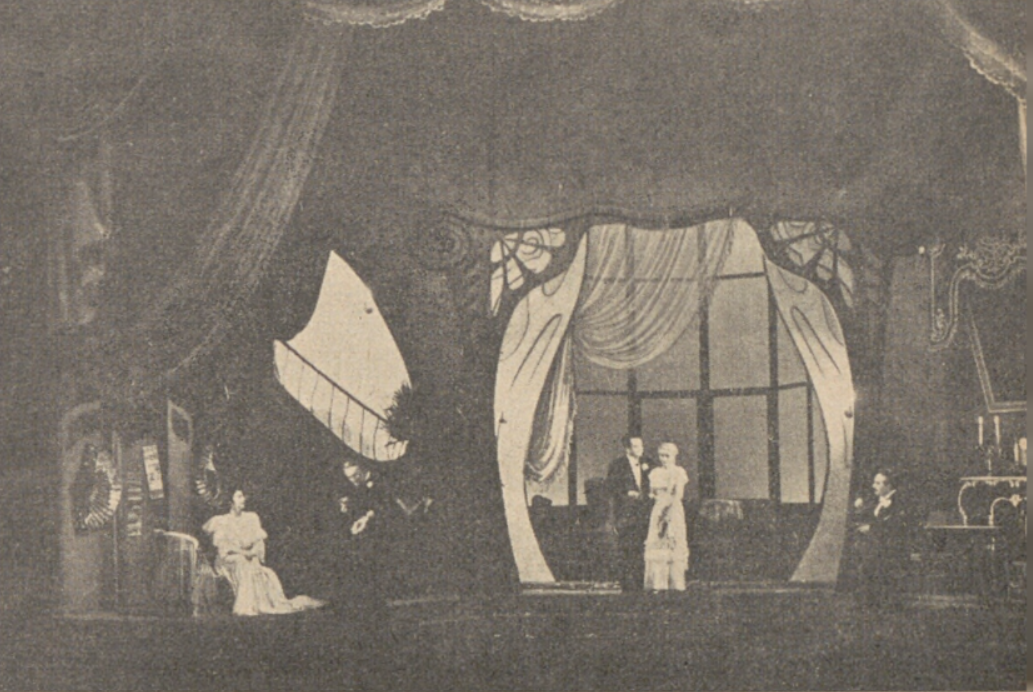
National Theatre Prague Visiting Hours, Tickets, and Historical Sites Guide
Date: 14/06/2025
Introduction
Standing proudly on the banks of the Vltava River, the National Theatre in Prague (Národní divadlo) is one of the Czech Republic’s most significant cultural monuments. More than a venue for the performing arts, it is a powerful symbol of Czech national identity, artistic achievement, and collective resilience. Built during the fervor of the 19th-century Czech National Revival, it was conceived as a beacon for the Czech language and culture during a period of Habsburg rule. Its construction, funded by a nation-wide campaign of public donations, remains a testament to the unity and ambition of the Czech people (Czechia Travel Guide; National Theatre Prague official website).
This comprehensive visitor guide explores the National Theatre’s rich history, architectural marvels, ticketing and visiting hours, accessibility, and insider travel tips. Whether you are attending a world-class opera, ballet, or drama performance, or simply exploring this magnificent site, this guide will help you plan an unforgettable experience in Prague.
Table of Contents
- Historical Overview
- Cultural Significance
- Key Milestones
- Visitor Information
- Nearby Attractions
- Frequently Asked Questions
- Visuals and Media
- Conclusion and Recommendations
- References
Historical Overview
Origins and Founding Vision
The National Theatre’s inception is inseparable from the Czech National Revival, a 19th-century movement dedicated to reviving the Czech language, culture, and national consciousness under Habsburg rule. The vision for a national theatre emerged in the 1840s and gained momentum in the 1860s, culminating in a grand public fundraising campaign that united Czechs across all social classes. The cornerstone was ceremoniously laid on May 16, 1868, symbolizing a collective commitment to cultural self-determination (Czechia Travel Guide).
Architectural Evolution
Initial Construction and Design
Josef Zítek, a renowned Czech architect, was entrusted with designing the Neo-Renaissance masterpiece that would become the National Theatre. Adorned with sculptures and murals by artists such as Mikoláš Aleš, František Ženíšek, and Josef Václav Myslbek, the building was conceived as both a performance venue and a showcase of national artistry (Czechia Travel Guide). The auditorium’s horseshoe shape was engineered for superior acoustics and sightlines.
The 1881 Fire and Reconstruction
Shortly after its first opening on June 11, 1881, tragedy struck when a fire ravaged much of the building. The loss galvanized further public support, and a second wave of donations enabled a swift reconstruction, led by architect Josef Schulz. The theatre triumphantly reopened in 1883 with Bedřich Smetana’s “Libuše,” reaffirming its symbolic value and national purpose (Czechia Travel Guide).
Renovations and Modernization
The National Theatre has undergone several renovations to maintain its architectural integrity and adapt to modern needs. Major restorations in the late 20th century and ongoing updates ensure technical excellence while preserving the building’s historic character (architectureofcities.com).
Cultural Significance
Symbol of National Identity
From the beginning, the National Theatre has embodied the Czech nation’s aspirations for cultural independence. Its motto, “A nation unto itself,” and its steadfast use of the Czech language in performances underscore its role as a guardian of national heritage during periods of foreign rule (Czechia Travel Guide).
Artistic Legacy
The theatre has nurtured Czech opera, ballet, and drama, premiering works by Bedřich Smetana, Antonín Dvořák, Leoš Janáček, and others. Its artistic ensembles deliver a repertoire that balances classical masterpieces with contemporary innovation. The theatre’s interiors are richly decorated with murals, sculptures, and gilded ornamentation, representing the pinnacle of Czech 19th-century art (prague.org).
Social and Political Impact
Throughout its history, the National Theatre has been a venue for significant social and political events, from patriotic celebrations to performances that reflect the nation’s evolving identity. Its reopening after the 1881 fire became a symbol of Czech resilience, and its stages have hosted socially engaged works that resonate with audiences today.
Key Milestones
- 1868: Cornerstone laid, marking the beginning of construction.
- 1881: Official opening and subsequent fire.
- 1883: Reopening with Smetana’s “Libuše.”
- 1920: Becomes a state institution.
- 1977–83: Major restoration and modernization.
- 2000s–Present: Further renovations and technological upgrades (Czechia Travel Guide).
Visitor Information
Tickets and Visiting Hours
- Guided Tours: Available daily, typically from 10:00 AM to 6:00 PM. Tours offer insight into the theatre’s history, architecture, and artistic treasures (narodni-divadlo.cz).
- Performances: Most begin at 7:00 PM, with occasional matinees. Check the official schedule.
- Box Office: Open 9:00 AM–6:00 PM on weekdays, until 4:00 PM on weekends.
- Tickets: Prices range from 200 CZK for balcony seats to 1,200 CZK for premium locations. Discounts available for students, seniors, and children (praguego.com).
- Booking: Strongly recommended to book in advance online or at the box office (pragueticketoffice.com).
Guided Tours and Special Events
- Guided Tours: Conducted in multiple languages (including English), tours last about 45 minutes and take visitors through the main foyer, auditorium, stage, and more (operafestival.fi).
- Special Events: The theatre hosts seasonal festivals, galas, and international collaborations. Check the official website for event details.
Accessibility and Travel Tips
- Accessibility: Wheelchair access to main entrance, auditorium, and restrooms. Contact the theatre for assistance.
- Transport: Located at Národní 2, Prague 1, near Charles Bridge and Wenceslas Square. Served by tram lines 6, 9, 17, 18, 22; nearest metro station: Národní třída (visitprague.info).
- Parking: Limited; public transport recommended.
- Dress Code: Smart dress is recommended; formal attire is traditional but not strictly required (viewfromprague.com).
- Photography: Not allowed during performances, but permitted during tours.
Nearby Attractions
Enhance your cultural itinerary by visiting these nearby Prague landmarks:
- Charles Bridge
- Prague Castle
- Old Town Square
- Wenceslas Square
- The Estates Theatre (visitprague.info)
Numerous cafes and restaurants are within walking distance, making it easy to combine your theatre visit with dining or sightseeing along the Vltava embankment.
Frequently Asked Questions
Q: What are the National Theatre Prague visiting hours?
A: Guided tours are typically offered from 10:00 AM to 6:00 PM. Performance times vary; consult the official website for specifics.
Q: How do I buy tickets?
A: Purchase online via the official website, at the box office, or through authorized partners.
Q: Is the theatre accessible for disabled visitors?
A: Yes, with wheelchair access and facilities. Contact the theatre in advance for assistance.
Q: Are guided tours available in English?
A: Yes, tours are available in multiple languages, including English.
Q: Is there a dress code?
A: Smart or smart-casual attire is recommended.
Q: Can I get a refund on my ticket?
A: Refund policies vary; check terms at purchase or contact the box office.
Visuals and Media
- Exterior: Capture the Neo-Renaissance façade with its copper dome and rooftop statues (alt: “National Theatre Prague copper dome and façade”).
- Interior: Highlights include the auditorium’s red velvet seats, grand chandelier, and ceiling murals (alt: “National Theatre Prague auditorium interior”).
- Terrace: Panoramic views of the Vltava River and Prague Castle (alt: “View from National Theatre terrace overlooking Prague Castle”).
High-quality images, virtual tours, and interactive maps can be found on the official website and recommended travel resources.
Conclusion and Recommendations
The National Theatre Prague is not just a historical landmark but a living symbol of Czech culture—offering visitors a blend of rich history, architectural splendor, and world-class performances. Plan your visit by checking official visiting hours, booking tickets in advance, and considering a guided tour to explore the theatre’s artistic treasures. Combine your trip with nearby attractions for a full Prague experience.
Stay up to date with upcoming performances and events via the official website or by downloading the Audiala app for curated cultural tours. Immerse yourself in the National Theatre’s legacy and discover the enduring spirit of the Czech people.
References
- National Theatre Prague official website
- Czechia Travel Guide
- Architecture of Cities
- Prague.org
- Visit Prague
- Prague Ticket Office
- Operafestival.fi
- Audiala app
- View from Prague
- PragueGo.com
- European Culture
